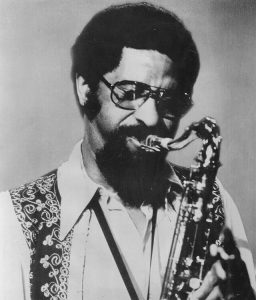Doc Cheatham Day
June 13, 1905 – June 2, 1997
On the Sunny Side of the Street
Click here if you have a memory of this artist that you’d like to share
Click here to Support Jazz on the Tube
Trumpeter, singer, and bandleader Adolphus Anthony “Doc” Cheatham was born on June 13, 1905, in Nashville, Tennessee.
Growing up in Nashville during that era, there was no jazz scene, so he was exposed to the music through recordings and touring groups.
Cheatham moved to Chicago in 1927, where he met and often stood in for Louis Armstrong.
After a long and successful career, Cheatham dedicated himself to honing his playing skills in his 60s, carefully analyzing and improving his performance. He even discovered his talent for singing at the age of 72.
The passing of Adolphus Anthony Cheatham, affectionately known as Doc Cheatham, marked the end of a remarkable career that spanned over 70 years as an active professional musician. Despite becoming physically frail for the demands of the trumpet, he continued to play with great spirit and emotion in his music.
Cheatham’s longevity contributed to his eventual recognition as an important soloist, heavily influenced by Louis Armstrong but with his own distinctive style acquired over a diverse career. In his later years, he began to receive the recognition as a soloist that had eluded him for much of his musical life. He was courted by festivals and concert promoters at an age when most musicians have long retired.
He also gained attention from major record companies, recording an album for Columbia Records at the age of 87 in 1992 and collaborating with young New Orleans trumpeter Nicholas Payton for a joint release on Verve Records in 1996.
However, Cheatham did not always enjoy such individual attention. He grew up in Nashville, Tennessee, where he was known as “Doc” from an early age. Despite his parents’ hope for him to pursue a career in medicine, he chose music instead. As a teenager, he played both cornet and saxophone and performed in the local vaudeville theater, backing the legendary blues singer Bessie Smith.
In 1926, he moved to Chicago and briefly played saxophone, including a record date with another famous blues singer of the time, Ma Rainey. He played with George Wynn and led his own group, but the most significant development during his Chicago period was his association with Louis Armstrong, often standing in for him.
Under the influence of Armstrong and Freddie Keppard, Cheatham shifted his focus to trumpet and established himself as one of the best lead trumpeters on the American band scene over the next decade. Lead trumpeters played a crucial role in big bands during the 1930s and were in high demand. Cheatham worked with Wilbur de Paris in Philadelphia in 1927-1928 and traveled to Europe with Sam Wooding in the same year, sharing solo duties with his friend and fellow trumpeter Tommy Ladnier.
Throughout the following decade, Cheatham served as a lead trumpeter in well-known big bands of the era, including the influential McKinney’s Cotton Pickers (1931-1932) and bands led by Chick Webb and, most notably, Cab Calloway (1933-1939). In 1939, he suffered a breakdown and took time away from playing to recover. He returned to performing in the war years, playing with various bands led by Teddy Wilson, Benny Carter, Teddy Hill, and Eddie Heywood.
The rise of bebop after the war momentarily diminished Cheatham’s interest in traditional jazz. In 1945, he took a job at the post office while also running his teaching studio in New York. When he resumed performing, he found himself drawn to the Latin-American band scene, working with bandleaders like Machito and Ricardo Rey during the height of its popularity.
He continued to play in that style throughout the 1950s and 1960s while also engaging in more traditional jazz settings with musicians such as Wilbur De Paris, Sammy Price, and Herbie Mann. He even led his own band in the early 1960s.
A significant turning point in his career came when he was invited to join the Benny Goodman Band in 1966, which, at the time, operated as a quintet rather than a big band. This context allowed Cheatham to explore his skills as a soloist alongside Goodman’s clarinet, and he quickly developed a passion for it.
From the late 1960s, he primarily worked as a freelance musician, further solidifying his reputation as a soloist rather than solely a lead trumpeter. While his lead trumpet abilities had been finely honed through his previous roles, he also showcased his expressive and imaginative improvisation skills, which gained prominence in his later years. He continued to learn from players outside his immediate musical sphere, incorporating new tricks into his playing. Additionally, he discovered singing as a new skill during this period. With remarkable stamina and resilience, he toured and recorded, often leading his own bands or collaborating with other jazz stars at festivals and concerts worldwide.
Cheatham performed his final gig at the Blues Alley club in Washington two days before his death but suffered a stroke the following day and passed away in the hospital.
Here is a video of Doc Cheatham performing in 1994 accompanied by the “Ellis Marsalis Trio.”
Personnel:
Doc Cheatham, trumpet
Ellis Marsalis, piano
Reginald Veal, bass
Martin Butler, drums
–
Click here if you have a memory of this artist that you’d like to share


